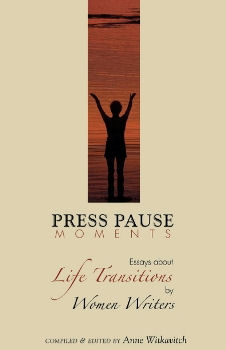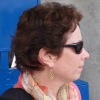|
In
preparing for a recent workshop, I updated the bibliography and
organization list I use as a handout for the class and was struck by
the importance of keeping this a living document updated with each new
find. See which resources from this partial roster you already have in
your reference library.
Magazines
Poets &
Writers (P&W): More than a magazine,
P&W offers loads of free information, support and guidance on
contests, grants, news, small presses, and lots more—all with free
access.
The Writer :
This magazine offers advice and instruction that are a cut above the
rest on craft, interviews, getting published, freelancing, and markets.
The Writer’s Chronicle:
This publication
offers master’s level essays, articles, news, and information on the
art of writing.
Writer’s Digest:
This magazine is the most
well-rounded resource for emerging writers.
Organizations
The Association of Writers
& Writing Programs (AWP): Membership in AWP is most
worthwhile. It offers a database on educational and market
opportunities, conference discounts, and the magazine—ideal for
teaching professionals and prospective students.
National Writers Union (NWU):
The NWU is a great fallback for freelance writers, editors, and
journalist who need help with contracts, legal issues, and insurance.
You can also obtain a press pass.
Pen American: This
is one of the world’s most prestigious writing organizations and is a
preeminent international literary and human rights organization.
Membership provides a number of literary books.
Books on Craft
179 Ways to Save a
Novel (Peter Selgin): A must-have reference
tool as comprehensive as an MFA, but lots easier and less expensive.
Bird by Bird
(Anne Lamott): A companion
that guides writers through common problems and concerns.
Ernest Hemingway on
Writing (Ernest Hemingway): Reflections by the
author on the promise and pitfalls of the writing life.
Escaping into the Open
(Elizabeth Berg): A
heart-to-heart on the writing life and particular challenges.
First
Paragraphs (Donald Newlove): A truly artistic
approach to crafting first paragraphs. Getting a handle on these
principles will serve the entire work.
The Forest for the
Trees (Betsy Lerner): A prescriptive from a
savvy editor and literary agent on the ins and outs of the writing,
editorial, and publishing process.
Getting into Character
(Brandilyn Collins): A solid
method for in-depth character development.
Grace Is Where I Live
(John Leax): A poet’s godly
perspective on the writing life—in all its grit and glory.
How to Get Happily
Published (Judith Appelbaum): The basics of the
publishing process.
Living by Fiction
(Annie Dillard): The
importance and relevance of good fiction and storytelling.
|
Revision
and
Self-Editing (James Scott Bell): A must-have on
how to revise and edit, with principles that are easy to understand and
implement.
The Art of Fiction
(John Gardner): A
quintessential work on the art of writing fiction.
The First Five Pages: A
Writer’s Guide to Staying Out of the Rejection Pile
(Noah Lukeman): A comprehensive guide to all facets of good writing for
publication. Just change this to the first five sentences, if not the
first five words.
The Writer’s Book of
Hope (Ralph Keyes): A chicken soup viewpoint of
rejection, hope, and the writing life.
Writing Down the Bones
(Natalie Goldberg): A poetic
view of the challenges and beauty of writing and the writing life.
Writing the Breakout
Novel (Donald Maass): A must-have by super agent
Donald Maass for novelists seeking to avoid the endless loop of
rejection.
Writing to Learn
(William Zinsser): A great
primer on the symbiotic and ongoing relationship between learning and
writing.
Reference Books
The Associated Press
Stylebook and Libel Manual: The journalist’s
guide to style and legal issues.
The Careful Writer:
A time-tested guide on word
usage and language.
The Chicago Manual of
Style: Used by nearly every literary magazine
and publisher for everything from formatting, style, and citations.
The Elements of Style:
A guide to the principal
requirements of plain English style. Focuses on the rules of usage in
literature, composition, and grammar.
Webster’s New World
College Dictionary: A comprehensive guide to
words and word-related usage and style. Also works as a thesaurus and
is available free online.
To pose an editing query,
contact Adele Annesi. Click here to visit
my online writing workshop.


|










